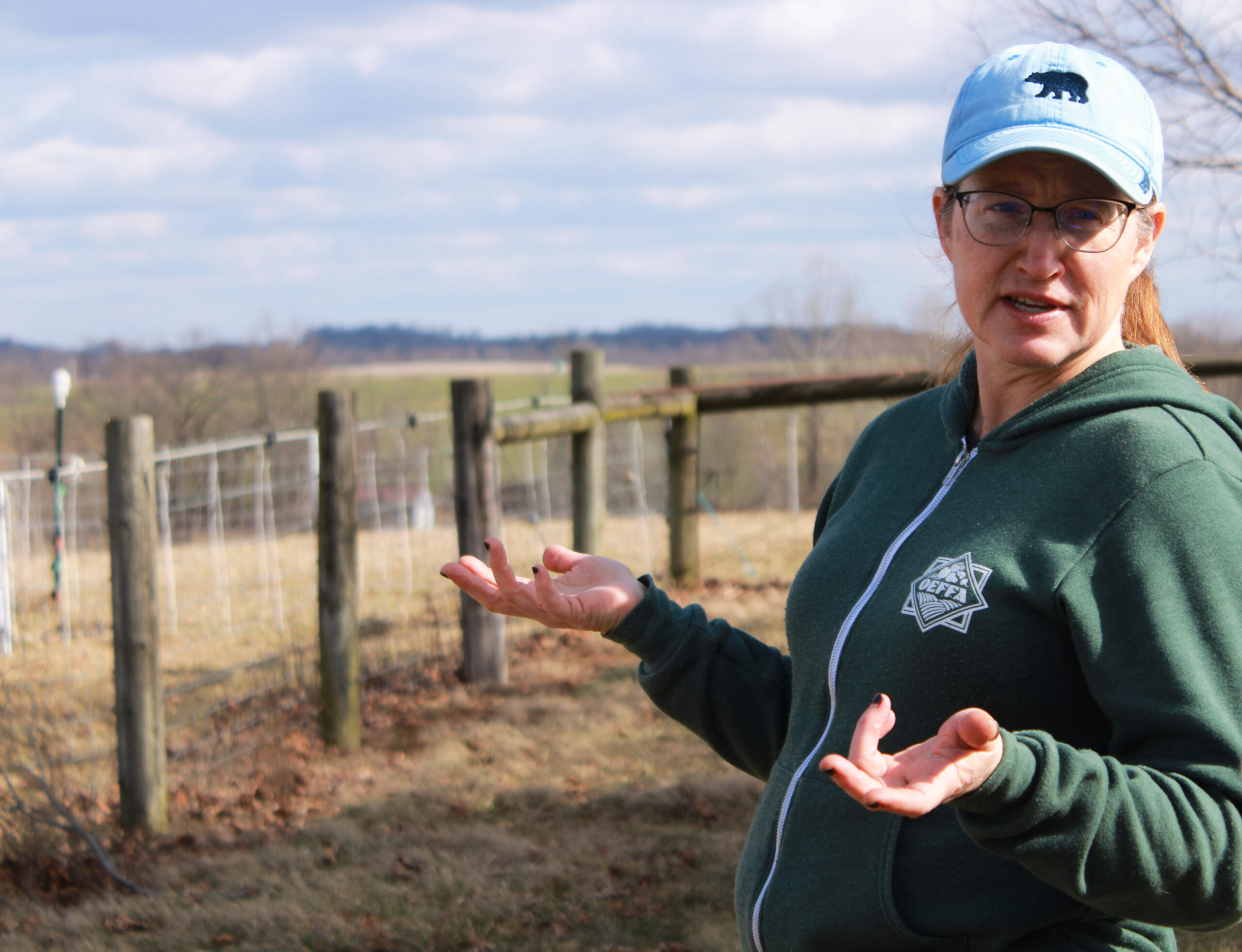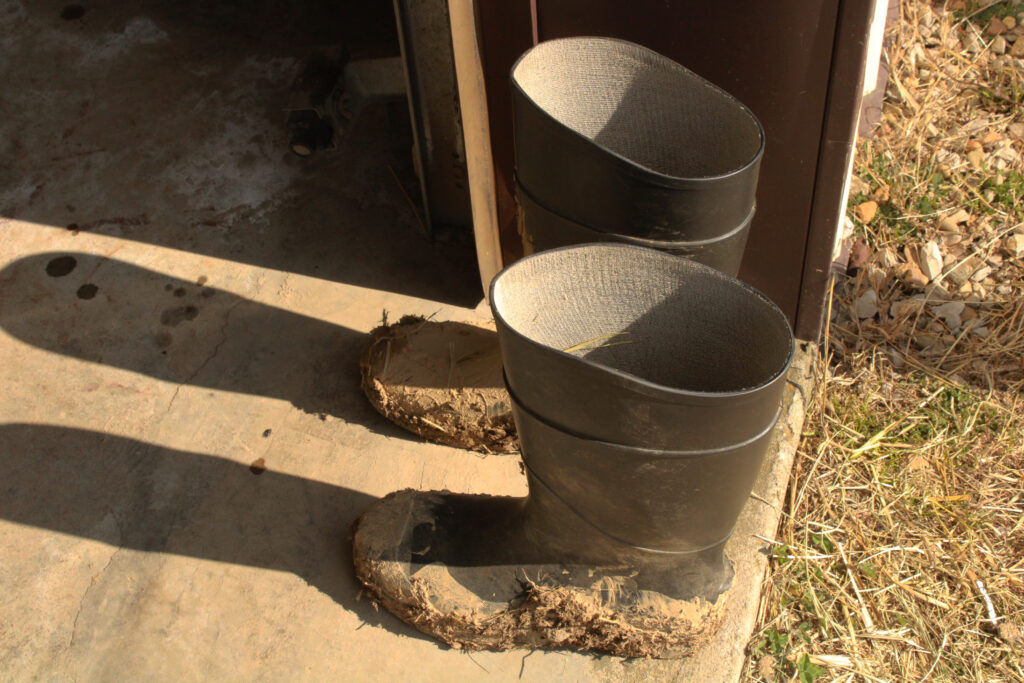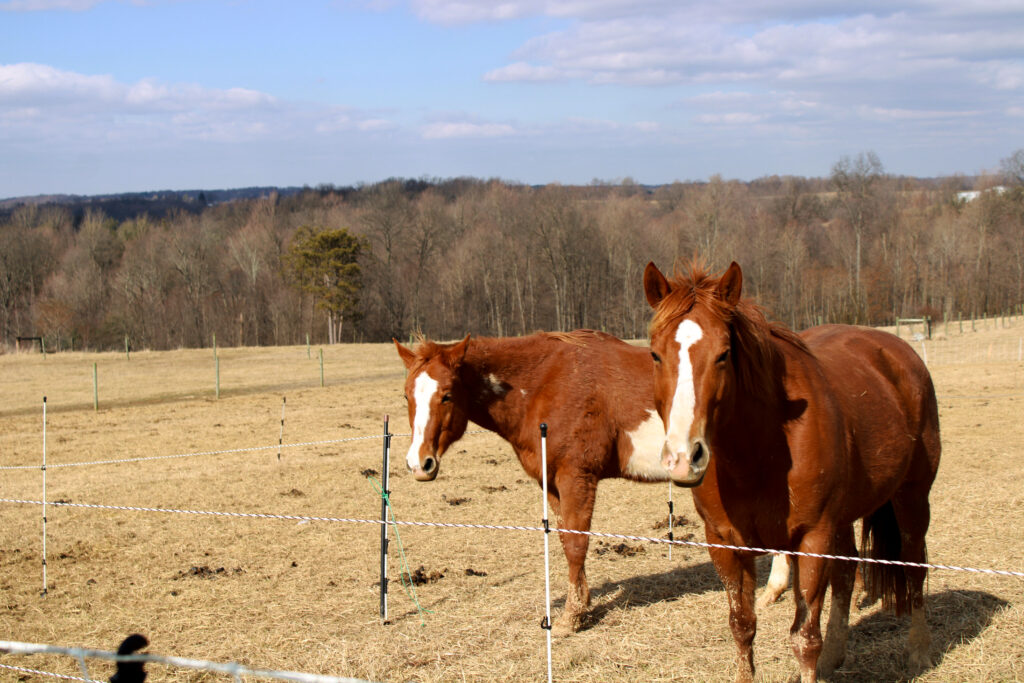
Written by Donovan Hunt, Photos by Ashley Beach
Julie Sharp has dreamed of starting a farm for many years and about 18 months ago, she made her dream a reality, but some of the hardest lessons have come from as she says her dreams hitting reality.

One day, Sharp had nearly finished bush-hogging her pasture on a scorching day in August when she heard a familiar ping. Sharp instantly knew that the shear pin, which she had been struggling with all day, had come undone again. “I’m never going to be able to farm,” she thought as she trudged back to her new home. As she lay on the icy floor to cool her body and mind, she heard a knock.
Pulling herself from the floor, Sharp wondered who it could be, and upon opening the door, she was pleased to see a familiar face. It was her neighbor, Wade.
“He got right under there, put the shear pin back on for me, and that was just really nice,” Sharp says. “You know, he just showed up right when I needed somebody.”
Sharp, 52, first dreamed of starting a farm while she was in college in Missouri. She studied animal science, which led her to work with general livestock. That was her first foray into farming, and it left a lasting impression. In June 2022, Sharp moved onto 25 acres of land near Somerset in Perry County. The land is hilly, which suits her sheep and two horses, Dolly and Fiona, well, giving them plenty of exercise.
Sharp says she has found herself in good company. She expresses gratitude for her neighbors and appreciates the sense of community despite being further apart in the country. They have been there for her since Day 1, Sharp says, recalling how her neighbors rode to her house on ATVs to say “hello” shortly after she’d settled in.
Sharp says she moved to Columbus about 20 years ago and worked for Ohio Ecological Food and Farm Association (OEFFA), a nonprofit that certifies organic farms and educates people about organic farming, while she raised her kids.
Sharp divorced three years ago and lives alone at the farm, but her 21-year-old daughter is close while she attends Ohio University and her 17-year-old son visits on the weekends but lives with her husband in Columbus during the week.
Part of the reason Sharp says she decided on Perry County was because it was only about an hour away from Columbus, so her son could easily visit, and it was cheaper than flatter land because it’s harder to grow produce on it.
On her property is a home built in the 90s and a 160-year-old barn. She has not walked onto parts of the top floor of the barn because she could fall through, but bits of its history are still there from the original ladders, support beams and pulleys used to move hay.
She says there is an opportunity to hold events like weddings or take senior pictures in it, but it would be a project for years down the line.
“This is what I’ve heard,” Sharp says. “The great thing about Perry County is that you can do whatever you want and the bad part of Perry County is your neighbors can do whatever they want.”
Luckily, Sharp says she has great neighbors and does not have to live around any eye sores. They’ve even helped her like Wade did with the shear pin.
Molly Sowash and CJ Morgan, owners of MoSo Farm in Athens, have also felt a sense of community since Molly started the farm four years ago with just eight calves. Now, they have 16 head, but it fluctuates depending on the time of year. The farm has also expanded to include pigs.
The first-generation farmer couple recently married, and collaborative hard work is nothing new in their relationship.
They met about six months after Sowash started the farm while Morgan was flipping a house in Ironton. She would visit on the weekends and help him with the flip, and he would come up and help her on the farm. Now, 18 months later, they have decided to manage the farm together.
The pair cleared out land that was owned by Sowash’s family and developed it into a place for their cows to graze. They make it clear that nothing that they have done would be possible without support from family and friends.
They use a technique called silvopasture, which puts trees into pastures for animals to give them more nutrients. Last April, they planted 510 trees all in almost one day because of help from their friends.

“We had a lot of volunteers, mostly for pizza and beer,” Morgan says.
Sharp also had to alter her land to make it fit for a farm. She installed a set of solar-powered electric fences to enclose, separate the animals from each other while they graze and keep predators like coyotes away. Sharp also has a chicken coop, but they stay separated from the other animals.
Dolly, Fiona and her flock of sheep graze on the hilly terrain Southeast Ohio is known for. She has made improvements to the land, including converting a garage the previous owner used to fix old cars into a barn for her horses and 13 ewes.
Sharp tells people that most of her farm is held together by the twine that strings her hay bales. Things are temporary while Sharp decides how to permanently set her farm up, which is why she purchased easily movable metal fences for their pen.
Although farming is a time-consuming practice, MoSo Farm is Sowash and Morgan’s 5-to-9 after their 9-to-5s. This is common for farmers because it can be difficult to make enough revenue to live solely on the land. Morgan and Sowash are used to this, though.
Currently, Sowash works as the sustainable agriculture program director for Rural Action, a job that directly dips into her passion at MoSo farm and one she finds fulfilling. Morgan also currently works for Wayne National Forest. Morgan also has a background in agriculture, having attended Hocking College for wildlife management and once worked for Snowville Creamery where he learned about rotational grazing and regenerative agriculture.
Rotational grazing is a practice Sharp wants to introduce on her farm as well. Her 5-year business goal is to increase her number of ewes from 13 to 40 to bring in revenue. She chose sheep because of the size of the land she purchased. Originally, she wanted cattle.
She had worked with cattle for years and studied them in school, but they require at least 60 acres of land, which was not available at the price and location Sharp desired.
Her current flock of 13 are due to give birth to lambs in May, which will be sent off to slaughter later this fall. She says sheep were a viable alternative to rotational grazing on a farm of her size. The rotational grazing is also part of Sharp’s plan with this farm because, to her, the wealth is in the soil.

Sharp says her rotational grazing technique will bring new plants, invertebrates, microbes and dung beetles, among other critters, that will increase the quality of soil. That quality will spread to the animals who will be healthier and have better tasting meat.
Sharp says building the farm has been exceedingly difficult, as she is new to full extent of the experience, and she can rely only on herself, some help from neighbors and advice from mentors she calls on the phone. The electric fences, she says, are great for keeping the animals in but have been one of her biggest pains to work with. Sharp says sometimes it takes almost 10 hours a day to move.
“What I didn’t realize about this type of farming is there’s so much geometry to setting up your pastures and moving these fences in a way that you are not doing way too much work,” Sharp says. “I wish someone was here to say, ‘When you take this fence down, walk that direction, not that direction.”
Though many of her dreams for the farm have become a reality, Sharp continues to face setbacks. She had spent $2,000 on outdoor enclosures for her horses, but they were knocked down by wind in the winter and she recently had two sheep die. Both issues were major sources of anxiety.
Sharp’s biggest lesson, she says, has been to stop focusing on future projects and remember why it was a dream in the first place.
She has always loved horses, and although the pair on her farm do not make her any money, they act as a different kind of revenue — joy. Each day, Sharps says she must decide whether to work on those hard future projects or decide to enjoy the day by going on a ride.
Due to some farming challenges, Sharp says she has not been riding in the last few months, but she will eventually return to the source of happiness that brought her to the farm in the first place.
Morgan says his last day punching a clock is April 19, after which he will work full time at MoSo. Sowash and Morgan say working long days at their day jobs and going into many hours working on the farm is nothing new to them, but for CJ, taking the leap to work full-time on his passion project has also been a source of anxiety.
“[There are] constant [questions] like ‘Is this the right choice? Crunching the numbers on our finances, I think we can make this much, what can we project?” Morgan says. “Passion wise, that’s a no-brainer. I feel like it’s something I almost have to do.”
What surprised Sharp most about farming was how evergreen it is and how that creates different give-and-takes. Some mornings, Sharp wakes up with a plan for that day’s project, and by the afternoon she’s already thinking about something else despite looking at the same blueprints she woke up with. It’s easy for her to get ahead of herself.
“This is beautiful, right here,” Sharp says. “Even when the weather is bad or there are animals sick [I should] really stop and enjoy the moment you’re in.”

